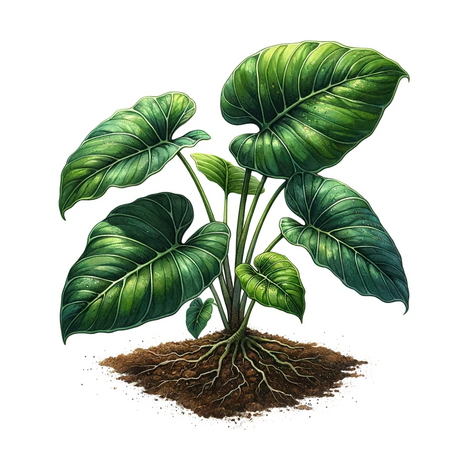Philodendron

What is Philodendron?
Philodendron is a genus of around 600 plant species that mostly grow as climbing or hanging plants. They often have large, glossy leaves that are colored in various shades of green or with colorful patterns. Some species also produce flowers, but these are rare and unpleasant-smelling. Philodendron is often confused with Monstera, another genus in the arum family, which has similar leaves.
Why is Philodendron poisonous to dogs?
Philodendron contains so-called calcium oxalate crystals in all parts of the plant, which can cause irritation on contact with the mucous membrane or skin. These crystals are needle-shaped and can burrow into the tissue, causing pain, swelling and inflammation. Philodendron can also contain other toxins which, depending on the type and quantity, can lead to gastrointestinal complaints or even breathing difficulties or heart problems.
What symptoms does a dog show when poisoned with philodendron?
If a dog eats or chews philodendron, it may show the following symptoms:
- salivation
- gagging
- vomiting
- diarrhea
- loss of appetite
- Difficulty swallowing
- hoarseness
- shortness of breath
- trembling
- weakness
- collapse
The symptoms can vary depending on the type and quantity of philodendron consumed. In severe cases, anaphylactic shock or cardiac arrest can occur, which is life-threatening.
What should you do if your dog has eaten philodendron?
If you suspect that your dog has eaten philodendron, you should seek veterinary advice immediately. Do not try to induce vomiting or give your dog anything to drink, as this could make the situation worse. If possible, keep a piece of the plant or a photo of it to help the vet make a diagnosis. Depending on the severity of the poisoning, the vet will initiate appropriate treatment, which may consist of gastric lavage, administration of activated charcoal or an infusion, for example.
How can you prevent poisoning with philodendron?
The best way to prevent philodendron poisoning is to avoid having this plant in your home or garden in the first place. However, if you don't want to do without this beautiful plant, you should place or hang it up in such a way that your dog has no access to it. Also make sure that there are no fallen leaves or stems lying around that your dog could ingest. Also train your dog not to nibble or eat plants.
Philodendron is an attractive houseplant, but it can be very poisonous to dogs. If your dog has eaten philodendron, you should waste no time and seek veterinary advice immediately. To avoid poisoning, you should either remove philodendron from your home or garden or place it where your dog cannot come into contact with it.
If you notice any signs of hypersensitivity or poisoning in your dog, you should see your vet immediately. We are not a substitute for a vet, but we try to be as accurate as possible. Every dog reacts differently and we recommend you get a second opinion or consult your vet if in doubt.
Stay healthy and take good care of your four-legged friend!😊